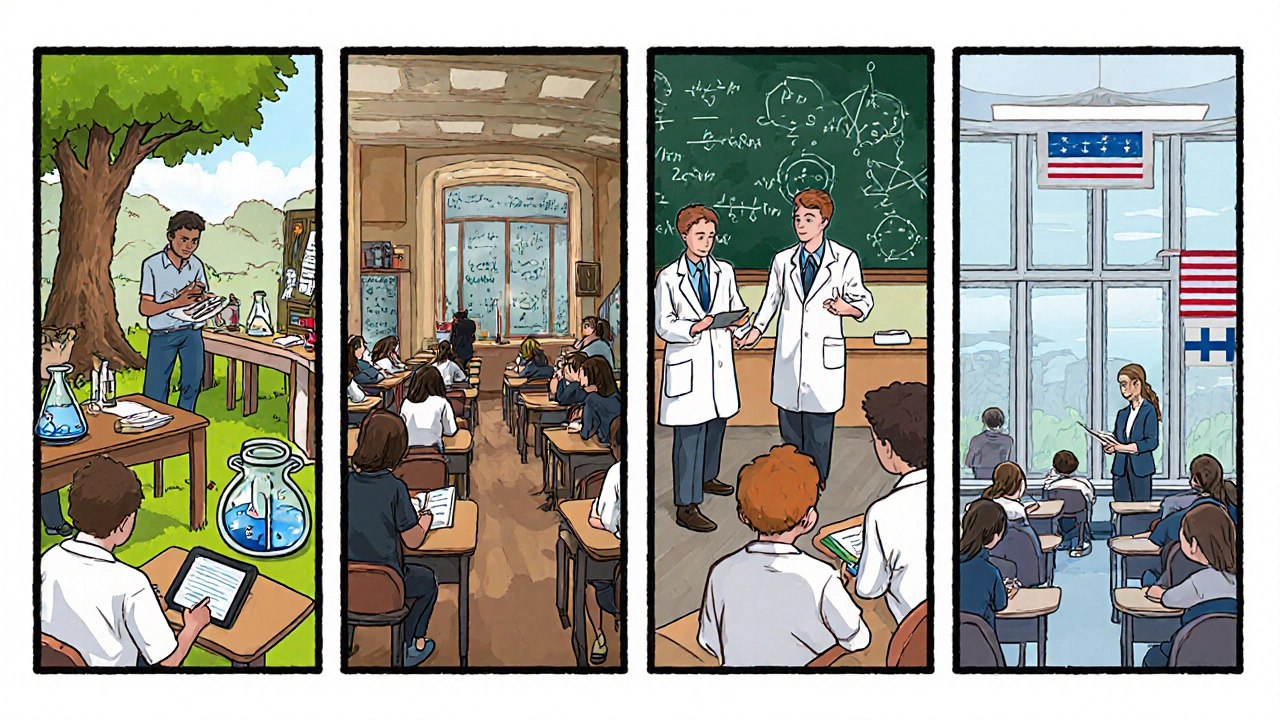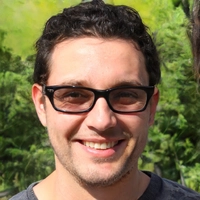When you ask yourself “Which syllabus is best in the world?”, the answer isn’t a one‑size‑fits‑all label. Different students, families, and universities value different strengths - depth of knowledge, critical thinking, exam flexibility, or university credit. This guide breaks down the most talked‑about curricula, measures them against clear criteria, and helps you decide which one aligns with your goals.
Key Takeaways
- International Baccalaureate (IB) excels in holistic development and university recognition worldwide.
- Cambridge International A‑Levels offer subject depth and flexibility for future specialization.
- Advanced Placement (AP) is ideal for U.S. college credit and fast‑track university entry.
- Finnish National Curriculum prioritizes student well‑being and teacher autonomy.
- Choose a syllabus that matches your learning style, career plans, and the higher‑education market you target.
What Makes a Syllabus Stand Out
Before diving into the specific programs, it helps to know which attributes most learners judge as "best". The most common factors are:
- Depth vs. breadth: Does the syllabus cover many topics superficially or fewer topics in depth?
- Assessment style: Are grades based on high‑stakes exams, continuous assessment, projects, or a mix?
- University acceptance: How widely do top universities recognize the qualification?
- Skill focus: Does the curriculum nurture critical thinking, research, collaboration, or technical skills?
- Flexibility: Can students pick subjects that suit their interests or career plans?
Every syllabus scores differently across these dimensions, which is why we compare them side by side.
Leading International Syllabi
International Baccalaureate (IB) Diploma Programme is a two‑year pre‑university course that emphasizes theory of knowledge, extended essay research, and creativity, activity, service (CAS). It was launched in 1968 and now serves over 5,000 schools worldwide. IB balances depth and breadth by requiring six subjects plus core components, and universities in the US, UK, Canada, and Australia regularly grant credit for high scores.
Cambridge International A‑Levels follow the UK A‑Level model, allowing students to study 3‑4 subjects in depth over two years. Launched by Cambridge Assessment International Education, they are recognized by more than 90% of UK universities and are gaining traction in Asia and the Middle East. The exam‑focused assessment provides clear subject mastery.
Advanced Placement (AP) courses are college‑level classes offered by high schools in the United States. Managed by the College Board, AP lets students earn college credit based on a single exam per subject. With 38 courses ranging from Calculus to Art History, AP is a fast route to university credit, especially for students aiming for competitive US colleges.
Finnish National Curriculum governs education from preschool through upper secondary school in Finland. It emphasizes student autonomy, minimal standardized testing, and highly qualified teachers. Finnish students consistently rank at the top of PISA assessments, reflecting strong problem‑solving and reading comprehension abilities.
Central Board of Secondary Education (CBSE) is India's most widespread public board, governing over 20 million students. CBSE focuses on a balanced mix of theory and application, preparing students for national engineering (JEE) and medical (NEET) entrance exams, as well as for international study.
Singapore Ministry of Education (MOE) Curriculum is known for its rigor and emphasis on mathematics and science. The curriculum includes the Primary School Leaving Examination (PSLE) and O‑Level/AAAAA type secondary tracks, producing high scores in international benchmarks.
Victorian Certificate of Education (VCE) is the senior secondary certificate for the Australian state of Victoria. It offers a mix of internal assessments and final exams, strong university pathways, and flexibility through elective subjects.
German Gymnasium Curriculum culminates in the Abitur, a comprehensive exam that opens doors to German universities. The Gymnasium emphasizes depth in humanities, sciences, and languages, with a strong focus on analytical writing.

Side‑by‑Side Comparison
| Curriculum | Program Length | Assessment Style | University Recognition | Skill Emphasis |
|---|---|---|---|---|
| International Baccalaureate (IB) | 2 years | Mix of exams, internal assessment, extended essay | Global - US, UK, EU, AU, CA | Critical thinking, research, community service |
| Cambridge International A‑Levels | 2 years | Final exams per subject | UK, Commonwealth, growing EU acceptance | Subject depth, analytical writing |
| Advanced Placement (AP) | 1‑2 years (per course) | Single‑session exam | US colleges (credit), selective EU recognition | College‑level content, exam strategy |
| Finnish National Curriculum | Varies (9‑12 years secondary) | Formative assessment, minimal exams | High‑school diploma recognized in EU, selective US | Problem solving, student autonomy |
| CBSE (India) | 2 years (Grades 11‑12) | Board exams + internal assessments | Indian universities, increasing overseas acceptance | Balanced theory‑practice, exam prep |
| Singapore MOE Curriculum | 4‑5 years (secondary) | National exams + school assessments | Highly regarded in Asia, accepted in many Western universities | Math‑science rigor, disciplined study habits |
| Victorian Certificate of Education (VCE) | 2 years (Years 11‑12) | Mix of coursework and final exams | Australian universities, recognized in UK and US | Flexibility, project‑based learning |
| German Gymnasium (Abitur) | 2‑3 years (Grades 11‑13) | Comprehensive final exams | German universities, EU, selective US schools | Analytical writing, multilingual competence |
Choosing the Right Syllabus for You
Not every student aims for the same destination. Below are typical scenarios and the syllabus that usually fits best.
- Goal: International university admission (US, UK, Canada) - IB offers the most universally accepted diploma with a strong research component.
- Goal: Early college credit in the US - AP lets you accumulate credits while still in high school, shortening your undergraduate timeline.
- Goal: Deep subject mastery before a specific career - Cambridge A‑Levels let you concentrate on 3‑4 subjects, ideal for engineering or medicine tracks.
- Goal: Balanced learning with low stress - Finnish curriculum promotes well‑being and creativity, suitable for students who thrive without high‑stakes testing.
- Goal: Competitive Indian engineering/medical entrance - CBSE aligns directly with JEE and NEET syllabi, providing targeted preparation.
- Goal: Strong maths and science foundation for Asian universities - Singapore’s MOE curriculum prepares students for rigorous STEM programs.
- Goal: Flexible elective choices within a supportive environment - VCE’s mix of coursework and exams gives room for artistic, vocational, or academic paths.
- Goal: Mastery of multiple languages and humanities - German Gymnasium’s emphasis on literature and language analysis fits well.
Pitfalls to Watch Out For
Even the best‑ranked syllabus can backfire if you ignore a few red flags.
- Assuming universal acceptance - Some niche programs (e.g., AP) may need additional validation in non‑US schools.
- Overlooking language requirements - IB and A‑Levels often require a second language; plan early.
- Ignoring cost - International curricula can be pricey; verify scholarship options or local school subsidies.
- Missing support structures - Highly independent programs like the Finnish model rely on teacher expertise; check school quality.
- Choosing based solely on rankings - Align the syllabus with personal learning style and career goals for real success.
Frequently Asked Questions
Is the IB diploma harder than A‑Levels?
Hardness depends on the student. IB demands a broader workload across six subjects plus core projects, while A‑Levels let you focus on three or four subjects. Both require strong time management, but IB’s extended essay and CAS add an extra layer of responsibility.
Can I switch from CBSE to IB mid‑high school?
Switching is possible but challenging. IB expects proficiency in theory of knowledge and research skills that may not be covered in CBSE. Early planning, extra tutoring, and a clear transition timeline are essential.
Do US universities accept the Finnish high‑school diploma?
Many US schools accept it if the student provides a detailed transcript and meets English proficiency standards. However, some elite institutions may request additional SAT/ACT scores.
Which syllabus gives the most college credit in the US?
AP exams can translate directly into college credit for scores of 4 or 5, often covering entire introductory courses. IB higher‑level subjects also grant credit, but policies vary more between institutions.
Is the Singapore curriculum suitable for arts‑focused students?
Singapore’s system is strong in STEM, but it also offers a robust arts stream with dedicated subjects. Students keen on creative fields should consider schools that emphasize the O‑Level arts track.
Next Steps
Start by listing your short‑term goals (university destination, preferred subjects, learning style). Then match those goals against the comparison table above. Reach out to schools offering your top‑ranked syllabus, ask about teacher qualifications, exam schedules, and support services. Finally, schedule a trial class or attend an open house to see if the teaching approach feels right. The right syllabus can shape not just your grades, but also the habits and skills you carry into adulthood.

